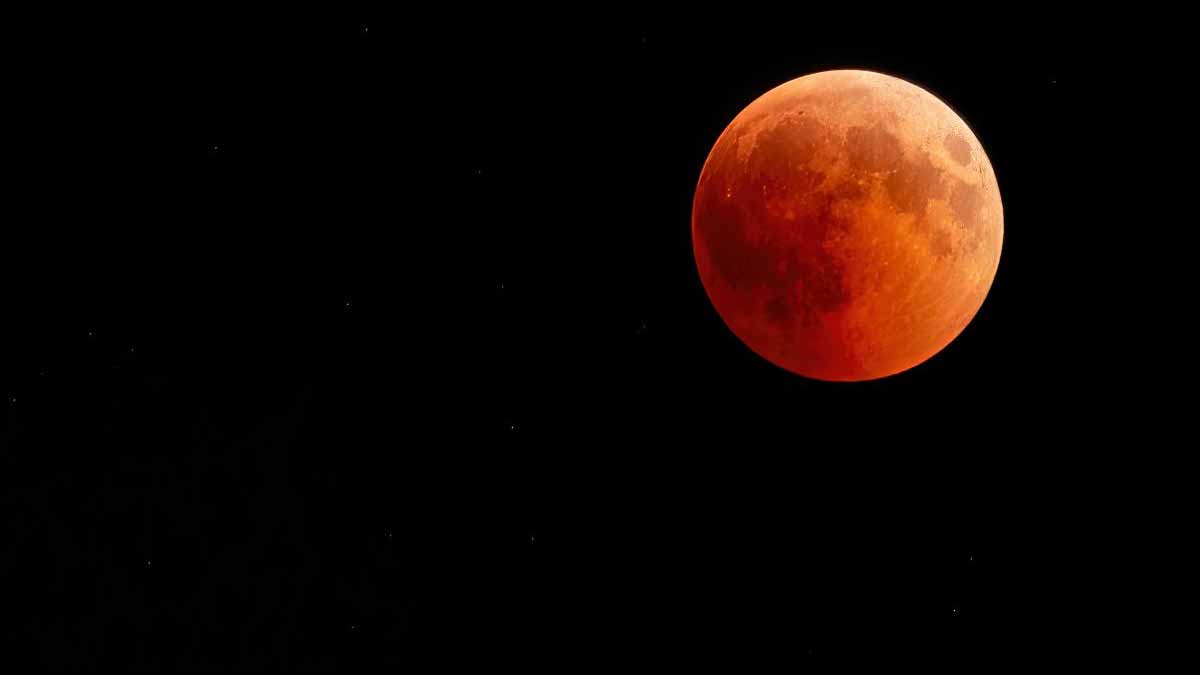On September 7–8, 2025, a rare lunar eclipse will give India an incredible 82-minute show as the Moon turns deep red during totality. The Blood Moon draws questions about safety, food, sleep, and pregnancy. Science remains steady while traditions add meaning. You can enjoy the spectacle with calm curiosity, respect your routine, and keep trust in facts that explain what you see and feel.
What a Blood Moon Really Means
A lunar eclipse happens when Earth passes between the Sun and the Moon, casting its shadow across the lunar disc. The central shadow (umbra) darkens the Moon, while the lighter edge (penumbra) softens its glow. This alignment affects light, not people—it changes how the Moon looks, not how your body works.
Unlike a solar eclipse, no special gear is needed. You can look with the naked eye for as long as you like. The red color appears when sunlight refracts through Earth’s atmosphere. Air scatters blue light and lets red tones travel farther, painting the Moon copper or crimson. The shade depends on dust, humidity, and clouds. This glow is optics, not radiation—it poses no health risk.
Eating, Drinking, and Routine During the Eclipse
Old cautions say food turns impure during an eclipse. Modern science shows this is not true. Cooked or fresh meals remain safe and nutritious. Kitchens and ingredients are unaffected by cosmic shadows. You can eat, feed children, and share snacks as usual.
Families may still choose fasting or reheating as part of tradition. Respecting customs can bring peace, but know that diet quality matters more than eclipse timing. Drink water, follow your doctor’s advice, and keep normal hygiene. If excitement keeps you up late, a light early dinner may help balance your routine.
Sleep, Mind, and Meaning When the Moon Turns Red
Rare events can stir emotions and nudge sleep schedules. People may feel restless or unusually alert—not because of lunar rays, but due to anticipation and late hours. A simple bedtime routine helps restore rhythm once the eclipse ends.
Tips for smoother rest: dim lights after viewing, avoid screens, and keep your bedroom cool. If you lose sleep, catch up with a short nap the next day. You can also note your feelings in a journal or take a mindful walk—turning the Blood Moon into a moment of reflection instead of stress.
Pregnancy Myths, Facts, and Support
Pregnancy often sits at the heart of eclipse traditions. Some customs advise staying indoors, avoiding sharp tools, or not looking at the Moon. Science finds no link between lunar eclipses and fetal health. The eclipse changes light on the Moon, not conditions in the womb.
If traditions bring comfort, follow them—just don’t skip medical care. Good nutrition, vitamins, doctor visits, and rest remain the essentials. Whether you watch the eclipse or stay inside, the choice is yours. Surround yourself with supportive people, and contact your doctor if you have concerns. Small comforts like an extra pillow or warm tea can make a big difference.
Culture, Stories, and Calm Practices
For centuries, Indians have called the eclipse Chandra Grahan and built stories around it—about cosmic balance, shadow, and renewal. These stories sit alongside astronomy, shaping how families and communities experience the night sky.
Traditions can strengthen connection. Families may gather to watch, pray, or quietly observe. You can mark the 82 minutes of totality, then share reflections afterward. Practices like sipping tea, gentle breathing, or writing a few thoughts can anchor the moment in calmness.
A Clear Way to Enjoy the Eclipse
Treat the night as special but safe. On September 7–8, 2025, India will see the Moon glowing red in totality. Health remains steady, food stays safe, and pregnancy is not at risk. Sleep may shift a little, but small adjustments restore balance. Embrace tradition if it comforts you, lean on science for assurance, and let the Blood Moon be a memory of beauty, not fear.
